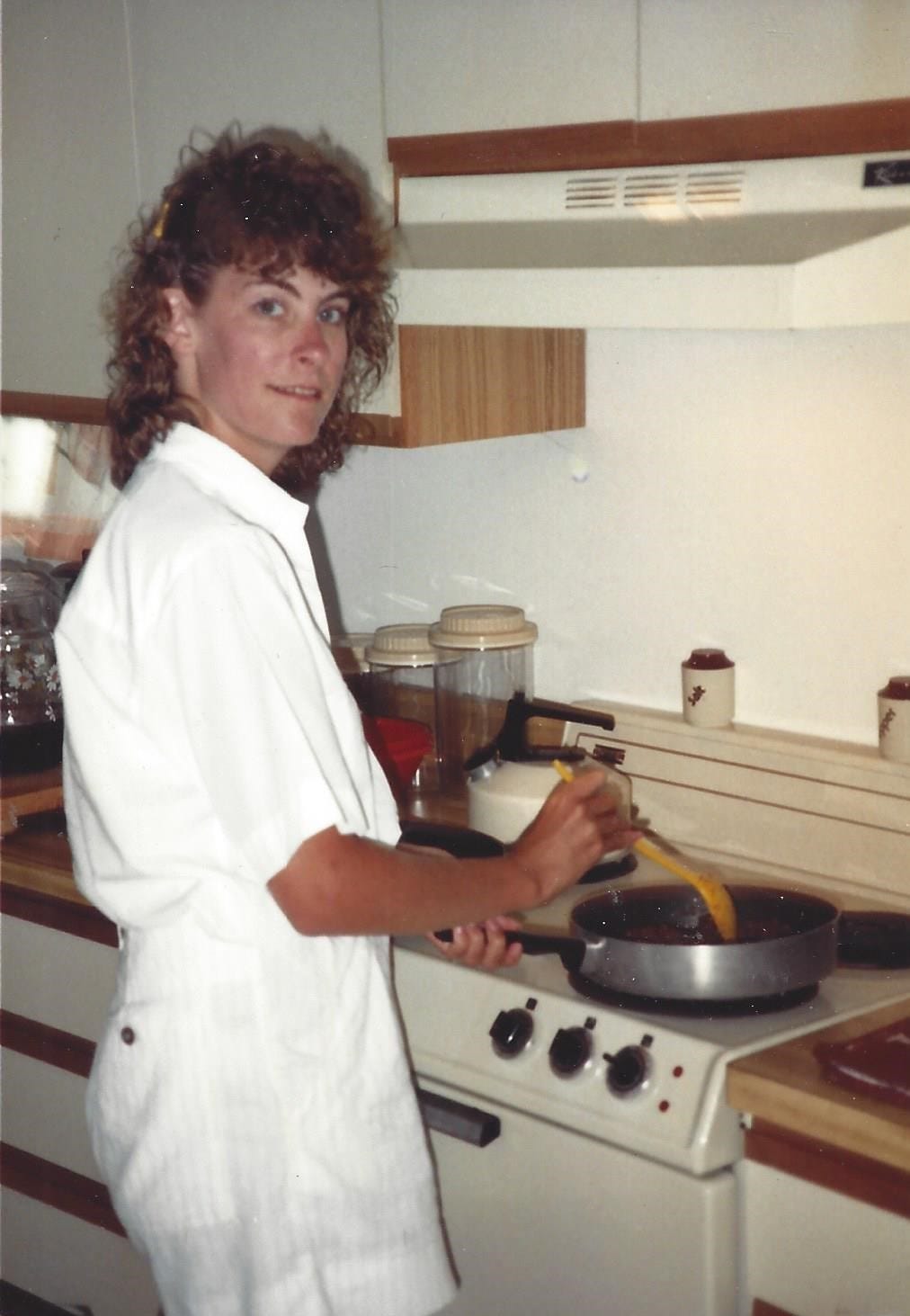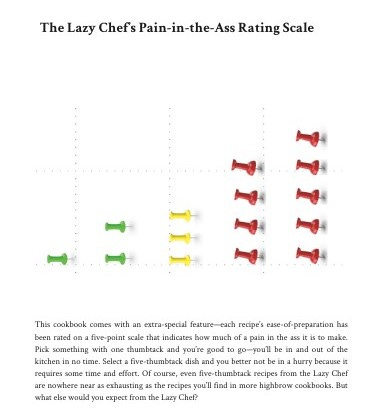What’s for dinner for the next 25,000 nights of your life?
The Lazy Chef has some ideas

It’s a crisis we all inevitably face sooner or later–what am I going to feed myself for dinner for the next 25,000 or so nights of my life?
Having lived in a dorm during all four years of college and then at home during grad school, I had managed to postpone the crisis. But I was in for a rude awakening soon after I got married.
Seven dinners a week—week after week in perpetuity—seemed overwhelming to 24-year-old me. All of a sudden, I had a new appreciation for all the years my mother had spent delivering meals to our kitchen table, with nary a thank you from me or the rest of my family.
Now I was in it for the long haul—this wasn’t just a weekend camping trip with the Girl Scouts or a week at the shore with my friends. I had better figure out quickly how to up my game.
I wasn’t entirely clueless. I was capable of doing simple things like making myself a box of Kraft macaroni and cheese for lunch. I could follow the recipe to make my grandmother’s pound cake for a special occasion. And my mom had shown me how to make her number-one best meal—spaghetti and meatballs with a homemade tomato sauce—so that I had something decent to make on a night when I cooked dinner for my boyfriend at his college apartment.
I also had some cooking experience under my belt, courtesy of the Girl Scouts. By the time I was a Cadette, I took my turn being responsible for dinner on a camping trip. I knew how to make tacos, and I also learned how to make Woodland Dinner (don’t be alarmed—no nuts and berry gathering required; it’s just mac and cheese with dried beef, canned mushrooms, and sour cream stirred in). I even knew how to build a fire to boil the water for the macaroni, though that seemed unnecessary since our house came complete with a regular stove.
I also had the recipe for one other entrée up my sleeve that I snipped out of my mother’s Good Housekeeping magazine sometime during my teenage years: potato-chip chicken. Hard to go wrong with an entrée that features potato chips. This grown-up meal with a fun twist was so perfect that I made it for dinner one night during Senior Week.
I also knew how to make some appetizers. While I was a poor college student and then someone just out of college without a lot of money, a night out with friends was often a night in at somebody’s place. I’d had little interest in learning how to make actual meals, but it was fun to find a recipe and make something I thought my friends and I would enjoy. If my new husband was game to feast on pepperoni cheese crescents and stromboli, we were set. But somehow that didn’t seem like grown-ass people were supposed to live.

A crash course on what’s for dinner
During the years when my mom was the head chef, I noticed that she adhered to the basic principle that dinner consisted of a meat, a vegetable, and a starch. As I started to plan my own menus, I realized that it wasn’t so hard to fill out the dance card. For instance, if you pulled pork chops out of the freezer, which you could then bread or slather with barbecue sauce and broil, all you needed to do was choose a vegetable and pick a starch to make a complete meal.
My mom had never been big on fresh vegetables, so I saw no need to get complicated. She mostly relied on canned veggies. I’d read something that said frozen vegetables were healthier than canned, and it seemed like they would be just as easy, so frozen veggies it was.
Coming up with a starch wasn’t so hard either. I stocked the pantry with rice, mashed potato flakes, and pasta. I also kept a selection of Betty Crocker’s boxed potatoes, Knorr’s rice sides, and bags of frozen potatoes on hand that I could work into my starch rotation.
You may be wondering–what about plain potatoes? Sometimes I did buy a bag. But potatoes were a higher-stakes starch that demanded peeling or more creativity than I could muster in those early days. And a five-pound bag of potatoes seemed a little like a ticking time bomb. With only two of us, it was too much pressure to eat them all before the eyes sprouted shoots or they started to go rotten.
Luckily, I also discovered some new buddies in the supermarket who did double duty, like Hamburger Helper. What’s not to love about a relatively cheap meal starter that you just add a pound of ground beef to so that it can magically become both your meat and your starch? Plus it came in more than one flavor, so it offered some variety.
Other frozen friends stood ready like good neighbors when I needed them. Oncor Turkey with gravy and Salisbury steak weren’t the most elegant meals I would ever serve, but they did help me put a meal on the table if I hadn’t remembered to take something out to defrost for dinner.
And of course my husband pitched in and took responsibility some of the time. Two years of apartment living meant he could usually come up with something. He’d combine a little bit of tomato sauce with some ground beef and noodles (essentially a primitive version of Hamburger Helper). He’d add jarred salsa and cheese to chicken and call it a meal. Plus he was braver than I was about grilling things.

The lazy chef’s secret weapon
As much as I appreciated my new buddy Hamburger Helper, I knew I had to expand my repertoire. Even I would get tired of it if we ate it too often.
It didn’t take long to learn that recipes were my friend—they helped solve what was for dinner, gave me a handy list of what I needed to pick up at the supermarket, and provided preparation instructions. If I followed the recipe, there was a reasonably good chance that I would end up with the meal I wanted.
My friend Alicia had given me a Better Homes and Gardens Cookbook as a joke the Christmas before my wedding, her way of saying haha, you are on your way to becoming your mother since now you’ll have to land dinner on the table every night. Well, it turned out that the cookbook was no joke, as it contained many classic recipes that any beginning cook ought to know.
My bridal shower guests had also been asked to contribute a recipe card, so I also had a collection of reliable dishes that had been battle-tested by ordinary people.
I also started gathering recipes for meals that we knew we liked. I asked my mother-in-law for her chili recipe—which was a win-win-win scenario because I now had another winning recipe in my arsenal, my husband could routinely enjoy a meal that he loved, and I’d paid his mom the compliment of asking her to share her recipe.
I got in the habit of collecting recipes that I came across in magazines, community cookbooks (which often feature the best recipes because you know people are only going to share their best crowdpleasers), and on the internet. Some were winners that I still make today. Other things were one-and-dones.
I discovered that there’s no shortage of recipes out there, and some of them can be pretty complicated. Just because a recipe is complex doesn’t mean it’s better. Each chef has to evaluate whether tackling complicated recipes feels worthwhile to them. When nobody, including myself, seemed to sufficiently appreciate that I myself had crushed the walnuts to make the crust of my from-scratch cheesecake, it was something of an epiphany. If you don’t enjoy the process of making something, simplify it next time.
Like any aspect of adulting, you can make cooking as straightforward or as complicated as you want it to be. Your choice can vary based on available time, energy level, and mood.
In the end, I determined that I didn’t mind making something special when the occasion called for it or if it was something I really craved. But while I wanted to eat well, I didn’t want to spend hours in the kitchen regularly. So I plan my meals and my menus accordingly. I have accepted that I am a Lazy Chef.

Lazy Chef principles worth remembering
You don’t have to do the math to know that feeding yourself dinner every night for the rest of your life is a marathon, not a sprint. The key is to pace yourself.
If you’re looking for complicated, plenty of other chefs can help you with that. But if you’re looking for easy, the Lazy Chef suggests the following:
Beyond feeding yourself reasonably nutritious meals, don’t feel pressured to go beyond what’s your jam. It’s not a character flaw if you don’t feel called to spend a lot of time in the kitchen. I used to feel bad because I didn’t bake cookies for the holidays like my best friend does. Then I noticed that she has little interest in gardening, a hobby that I am willing to devote some effort to. To each her (or his) own.
The good news about being the head chef: Once you are in charge of dinner, the dishes you don’t like can permanently fall off the menu unless you have to occasionally throw someone a bone because they happen to like them (oh, hello peas!).
When vetting recipes, unless you have a really adventurous palate, stick to ingredients that aren’t too exotic. My golden rule is that if a recipe has three or more ingredients that I’m not familiar with or don’t like, it’s not for me.
A crockpot is a handy small appliance worth acquiring. There’s nothing like a single-pot meal, plus it’s lovely to spend the day knowing that when you get home, dinner will already be ready and waiting for you.
Leftovers are a gift to yourself. Cook once, eat twice–what a concept! Cook slightly larger portions than you need for one sitting, and you cut your workload in half. Brilliant.
You’re more likely to eat healthy if you adopt habits you can live with for the long haul. Make choices you don’t mind. We adopted low-fat cream cheese, low-fat sour cream, and skim milk. We are satisfied with baking French fries instead of deep-frying them. On the other hand, when I tried low-sodium soup and found it lacking, I decided to avoid it unless someone is under a doctor’s orders.
Give thanks for parties and invitations to come over for dinner. Offer to bring something along, but enjoy your night off from figuring out what’s for dinner.
The Lazy Chef is here to help
The year that my oldest daughter moved into her first big-girl apartment, I assembled a collection of my best recipes into The Lazy Chef Cookbook.
It had an extra-special feature—every recipe’s ease-of-preparation is rated on a five-point scale that indicates how much of a pain in the ass it is to make. Pick something with one thumbtack and you’ll be in and out of the kitchen in no time. Select a five-thumbtack dish and you'd better not be in a hurry.
Of course, even five-thumbtack recipes from the Lazy Chef are nowhere near as exhausting as the recipes you’ll find in more highbrow cookbooks. But what else would you expect from the Lazy Chef?
If you’re not sure what’s for dinner this week, the Lazy Chef’s recipe for Pasta Presto could fill one of the slots.
And if the Lazy Chef is your kind of cook, there’s more from where that came from.





